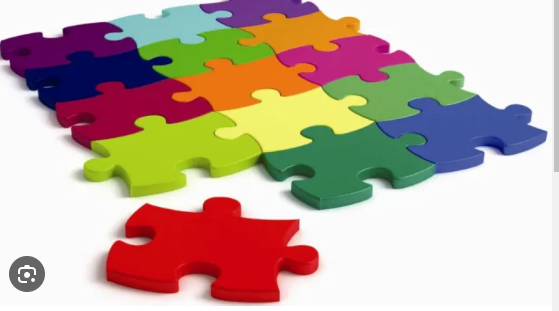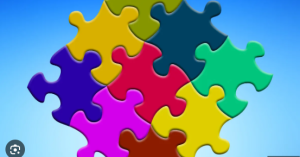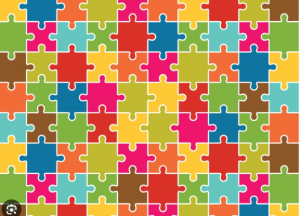Introduction
- Define the essence of a puzzle and its significance in engaging and entertaining audiences.
- Highlight the importance of making puzzles enjoyable for various audiences.
Step 1: Understanding Your Audience
- Discuss the significance of knowing your audience’s preferences, age group, and interests.
- Explain how this knowledge influences the type and complexity of puzzles you create.
Step 2: Selecting the Puzzle Type
- Describe various puzzle types: jigsaw puzzles, crosswords, riddles, logic puzzles, etc.
- Explain the unique appeal and challenges of each type.
Step 3: Crafting Engaging Content
- Discuss the importance of creating interesting and diverse content for puzzles.
- Tips on generating original ideas and themes for puzzles that captivate the audience.
Step 4: Setting the Difficulty Level
- Explain the balance between challenge and frustration in puzzles.
- Techniques to adjust difficulty levels based on the target audience.
Step 5: Design and Visual Appeal
- Emphasize the significance of visual aesthetics in puzzles.
- Tips on creating visually appealing designs that complement the puzzle’s theme.
Step 6: Testing and Refinement
- Discuss the importance of beta testing puzzles for effectiveness.
- How to gather feedback and refine puzzles for a better user experience.
Step 7: Adding Interactivity and Engagement
- Explore methods to enhance puzzles with interactive elements.
- Suggestions for incorporating storytelling or gamification into puzzles.
Step 8: Promoting Puzzle Engagement
- Strategies to encourage audience participation and engagement with puzzles.
- Discuss the role of social media, contests, or community involvement.
Step 9: Embracing Technology
- Highlight the role of technology in modernizing and enhancing puzzles.
- Examples of how digital platforms or apps can augment puzzle experiences.
Step 10: Evolving and Innovating
- Encourage continuous innovation and evolution in puzzle creation.
- Inspire creators to explore new ideas, trends, and technologies.
Conclusion
- Recap the essential steps to make puzzles enjoyable and engaging.
- Emphasize the joy and satisfaction of creating puzzles that entertain and challenge individuals.
Step 1: Define the Puzzle Type
Identify the type of puzzle you want to create. It could be a crossword, sudoku, jigsaw, riddle, maze, or any other variety. Understand the rules, mechanics, and objectives specific to that puzzle type.
Step 2: Establish Clear Objectives
Define the purpose and goal of the puzzle. Whether it’s to entertain, educate, challenge, or a combination of these, having a clear objective will guide your design process.
Step 3: Tailor Difficulty Levels
Consider your target audience and adjust the difficulty level accordingly. A balance between challenge and accessibility is key to keeping the puzzle engaging without being overly frustrating.
Step 4: Develop a Captivating Theme or Story
Integrate a compelling theme or storyline to give context and interest to the puzzle. A narrative can add depth and make solving the puzzle more immersive and enjoyable.
Step 5: Focus on Clarity and Consistency
Ensure instructions are clear and concise. Consistency in design, rules, and clues is crucial for a smooth-solving experience. Ambiguity can lead to confusion and diminish the fun factor.
Step 6: Engage with Creativity and Innovation
Incorporate creative elements or twists that differentiate your puzzle from others. Innovative clues, unique patterns, or unconventional approaches can captivate and excite the solver.
Step 7: Encourage Exploration and Experimentation
Design the puzzle in a way that encourages exploration and experimentation. Offer hints or gradual difficulty increments to keep solvers motivated without giving away the solution too easily.
Step 8: Incorporate Visual and Aesthetic Appeal
Visual aesthetics play a significant role in enhancing the puzzle experience. Use colors, illustrations, or designs that are visually appealing and complement the theme or story.
Step 9: Test and Refine
Test the puzzle thoroughly to identify potential issues or areas that might confuse or frustrate the solver. Gather feedback and refine the puzzle based on user experience to improve its overall quality.
Step 10: Provide Satisfaction and Reward
Ensure that completing the puzzle brings a sense of accomplishment and satisfaction. Consider incorporating rewards, such as unlocking a hidden message or revealing an interesting fact.
1. Understand Your Audience:
Before diving into puzzle creation, know who you’re targeting. Tailoring the puzzle’s theme, difficulty, and style to your audience’s preferences is key to ensuring its appeal.
2. Choose an Engaging Theme or Concept:
Start by selecting a theme that resonates with your audience. Whether it’s a crossword, a jigsaw, a riddle, or a logic puzzle, the theme should excite and interest your audience.
3. Balance Challenge and Accessibility:
Striking the right balance between difficulty and accessibility is crucial. A puzzle that’s too easy can become boring, while one that’s overly difficult might discourage participation. Gradually increasing difficulty can maintain interest while challenging the solver.
4. Incorporate Variety:
Inject diversity into your puzzles. Incorporate different types of challenges or clues within the same puzzle. For instance, mix riddles with wordplay or combine visual elements with logic.
5. Focus on Clarity:
Clarity is essential. Ensure instructions are clear and concise, guiding the solver without causing confusion. Ambiguity can frustrate, so clarity in clues and directions is key.
6. Add an Element of Surprise or Creativity:
Introduce unexpected twists or unique elements that make the puzzle stand out. Surprise elements or creative solutions add excitement and make the solving experience memorable.
7. Allow Room for Creativity:
Provide opportunities for solvers to use their imagination or creative thinking. Leave space for multiple approaches or solutions whenever possible, fostering a sense of accomplishment upon completion.
8. Feedback and Iteration:
Solicit feedback from testers or early solvers. Analyze their experiences to identify any stumbling blocks or areas for improvement. Iteration based on feedback can refine and enhance the puzzle’s overall enjoyment.
9. Provide Satisfying Solutions:
The ‘aha’ moment when the puzzle is solved should be satisfying. Ensure that the solution aligns with the clues provided and offers a sense of accomplishment.
10. Encourage Collaboration or Interaction:
Foster a sense of community or collaboration by designing puzzles that encourage interaction between solvers. This could be through cooperative elements or multiplayer challenges.
11. Polish Presentation:
Presentation matters. Aesthetically pleasing layouts, clear typography, and visually appealing designs enhance the overall experience of solving the puzzle.
12. Reward Participation:
Consider offering rewards or recognition for successful puzzle completion. This can motivate participation and enhance the overall enjoyment.
Title: Crafting an Engaging Puzzle Experience: A Step-by-Step Guide to Making Puzzles Fun
Introduction: Puzzles have fascinated humanity for centuries, captivating our minds and challenging our problem-solving abilities. Creating a truly enjoyable puzzle experience requires more than just assembling pieces or solving riddles. It involves a careful blend of creativity, design, and psychology to engage the solver and offer a gratifying journey. Here, we explore step by step how to infuse your puzzles with elements that make them not just solvable but thoroughly enjoyable.
Step 1: Understanding Your Audience Identify your target audience to tailor the puzzle’s complexity, theme, and style. A puzzle meant for children will vastly differ from one designed for adults. Understanding their preferences, cognitive abilities, and interests is crucial for crafting a puzzle that resonates with them.
Step 2: Choosing the Right Puzzle Type Explore various types of puzzles—from crosswords and jigsaw puzzles to logic puzzles and brain teasers. Each type offers unique challenges and appeals to different audiences. Select a puzzle type that aligns with your audience’s interests and the overall theme you aim to convey.
Step 3: Incorporating Creativity and Uniqueness Infuse your puzzle with creativity and uniqueness. Add a twist or an unexpected element that sets it apart from conventional puzzles. This could involve incorporating storytelling, unusual mechanics, or incorporating elements from various puzzle types to create a hybrid puzzle experience.
Step 4: Balancing Difficulty Levels Maintain a balance between challenge and achievability. A puzzle that’s too easy can be mundane, while one that’s overly complex might frustrate the solver. Implement progressive difficulty levels or hints to assist solvers without giving away the solution entirely, ensuring a satisfying experience regardless of skill level.
Step 5: Designing Engaging Visuals and Themes Visual appeal greatly enhances the puzzle experience. Choose vibrant colors, captivating images, or themes that resonate with your audience. The visual aesthetics should complement the puzzle’s mechanics, drawing solvers deeper into the challenge.
Step 6: Encouraging Engagement and Interaction Create opportunities for engagement and interaction. Incorporate multiplayer elements or collaborative puzzles that encourage teamwork. Online platforms can facilitate global participation and discussion, fostering a sense of community around your puzzles.
Step 7: Feedback and Iteration Encourage feedback from solvers to continuously improve your puzzles. Analyze their experiences, identify pain points, and iterate on the design. This iterative process helps refine future puzzles, ensuring an ever-improving experience for your audience.
Step 8: Rewarding the Solver Implement rewards or acknowledgments for completing the puzzle successfully. Recognition, virtual badges, or even small incentives can motivate solvers and enhance their satisfaction upon completion.
Conclusion: Crafting a truly enjoyable puzzle involves a blend of understanding your audience, creativity, balancing challenge, and fostering engagement. By following these steps and continuously refining your approach based on feedback, you can create puzzles that not only challenge but also delight and entertain your audience, providing them with an enriching experience worth solving.



